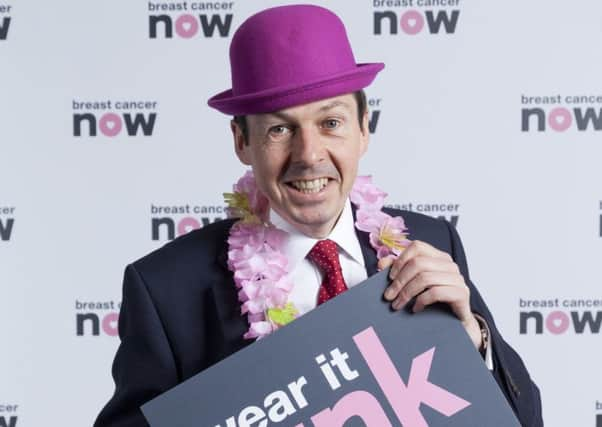Lizzy Buchan: Scottish cancer care needs to be more equal


Great advances have been made in tackling “the Big C” over the last 30 years.
Survival rates are up, treatments are kinder and the stigma attached to cancer has been shattered as more and more people are touched by the disease.
Advertisement
Hide AdAdvertisement
Hide AdAlthough it is no longer a death sentence, a cancer diagnosis is undoubtedly devastating for patients and their families.
The Scottish Government standard states that 95 per cent of patients who go to their GP with the suspicion of cancer should start treatment within 62 days.
The fear and uncertainty in those early days must weigh heavy on people’s minds and this period might feel like an awfully long time when you are worried about your treatment or chance of survival.
The latest figures show only 90.8 per cent of patients were treated within the two month limit in the last three months of 2015, while waiting times have been steadily rising.
The Scottish Government’s own target has not been met nationally since 2013.
Prompt treatment is key for improving survival rates so we should not have a situation where only three of Scotland’s 14 health boards are meeting these vital targets, as was revealed last week.
Scotland’s geography plays a complex role in how healthcare is delivered but few would argue that people should face poorer treatment based on where they live.
Yet the data shows that waiting times differed widely across Scotland, as some patients in Highland waited up to 211 days for treatment, while the longest wait in Dumfries and Galloway was just 91 days.
Advertisement
Hide AdAdvertisement
Hide AdThere is also a worrying difference in the treatment times for specific cancers.
Urology patients with bladder, prostate and kidney cancers face among the longest waits as just 81 per cent of people were seen in time compared to 97.3 per cent of ovarian cancer patients.
Even breast cancer, whose campaigners have so successfully captured the public’s imagination that they managed to get all the Scottish party leaders to don pink feather boas last year, failed to hit the target.
Capacity issues such as staffing shortages and a backlog of patients waiting for key diagnostic tests have been blamed for these long waits.
NHS Lothian, one of Scotland’s largest health boards, reported that the loss of two specialists had caused problems within urology.
Certain specialties can be more difficult to recruit into than others but we should not be in a position where some cancers are more fashionable and those patients get better treatment.
The phrase “postcode lottery” is over-used but this is a clear situation where the wording is appropriate.
It cannot be right that Mrs A waits months for treatment for cervical cancer in a Highland hospital, while Mr B can get an appointment swiftly for skin cancer in the Borders.
Advertisement
Hide AdAdvertisement
Hide AdOf course there will be regional variations but they must not be gaping chasms that drastically vary outcomes for patients.
Health inequalities also play a major role in these variations as cancer is still more common in the most deprived parts of Scotland.
It is not a problem with an easy solution.
The Scottish Government announced its £100 million cancer strategy last month, and it has been broadly welcomed and shows a laudable commitment to the improving the bigger picture.
The raft of measures includes a £5m funding boost to improve waiting times.
This money is very welcome but may not go far enough to reduce the lengthy waits faced across Scotland.
Labour has vowed that patients would recieve an appointment with a specialist and a diagnosis within a fortnight but are the resources there to meet such a pledge without major changes.
There will always be voices calling for a rethink on the sheer number of hospital targets and there is a degree of wisdom in the argument.
It does heap pressure on stretched staff and can skew priorities towards ticking boxes rather than delivering the best care.
Advertisement
Hide AdAdvertisement
Hide AdThese figures make it clear that someone, somewhere, has taken their eye off the ball and that is of value to NHS bosses in terms of how the situation can be improved.
Wiser heads than mine will undoubtedly come up with a solution but it seems to me that this is all about keeping an eye on the detail rather than the bigger picture.
The NHS is an enormous tangle of important strands which are all straining in different directions but are still inextricably linked. Big numbers still contain individuals for whom even the smallest delay can have big consequences.
The least we can do is remember the person behind the number and ensure they get the care they need in a timely fashion.
Huge progress has been made against cancer but sadly the battle is not yet won.